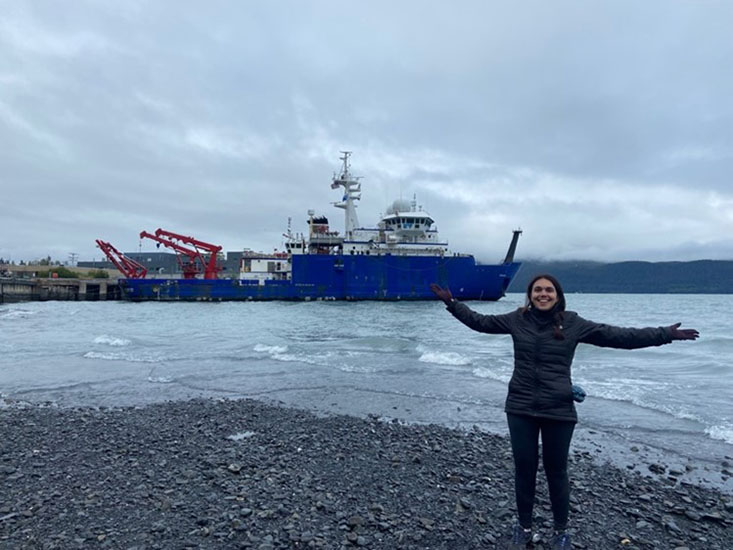Written by: Lise Artigue, Postdoctoral scholar and marine geochemist
With the continued release of anthropogenic carbon dioxide, the pH at the surface of the ocean is projected to decrease from 8.1 to 7.7 by 2100. In short, the ocean is becoming more acidic. The effect of this lower pH on calcifying organisms – those that use calcium carbonate for structure and protection, such as clams, scallops and corals -- is widely studied. However its impact on metal speciation in the oceans is much less well understood (Millero et al., 2008).
Better understanding metal speciation is essential because it provides insight into the bioavailability of metals to phytoplankton, which comprise the base of the marine food web. In particular, the study of iron speciation is important because iron is an essential micronutrient for phytoplankton. In fact, iron limits primary production (phytoplankton growth) in about one third of the ocean (e.g., Boyd et al., 2007).
For these reasons, for one month starting June 02, 2022, I joined 12 other scientists aboard the R/V Sikuliaq to participate in the Iron Ocean Acidification Cruise, or the "FeOA Cruise," with my USF colleagues Kristen Buck, Salvatore Caprara, Delfina Navarro, Calyn Crawford, and Caitlyn Parente. This ship is owned by the National Science Foundation (NSF) and operated by the University of Alaska Fairbanks College of Fisheries and Ocean Sciences. We departed from Seattle, Washington, passed through the coastal waters of California, the North Pacific Gyre, and the waters of the Gulf of Alaska, and finally disembarked a month later in Seward, Alaska.
Throughout our cruise, the science team used many different techniques to collect and measure samples for biological and/or chemical studies. I was responsible for iron (Fe) speciation. My job was to measure the strength and concentration of Fe-complexing ligands.
If you want to learn more about the science on board, or just take a look at the lives of 18 scientists and other crew members during a month-long oceanographic cruise, feel free to watch my video below.
And if you want to read more about the experience of a scientific onboard you can also read Caitlyn Parente's excellent blog post.
References:
Boyd, P. W., Jickells, T., Law, C. S., Blain, S., Boyle, E. A., Buesseler, K. O., Coale, K. H., Cullen, J. J., de Baar, H. J. W., Follows, M., Harvey, M., Lancelot, C., Levasseur, M., Owens, N. P. J., Pollard, R., Rivkin, R. B., Sarmiento, J., Schoemann, V., Smetacek, V., … Watson, A. J. (2007). Mesoscale iron enrichment experiments 1993-2005: Synthesis and future directions. Science (New York, N.Y.), 315(5812), 612–617. https://doi.org/10.1126/science.1131669
Millero, F. J., Feistel, R., Wright, D. G., & McDougall, T. J. (2008). The composition of Standard Seawater and the definition of the Reference-Composition Salinity Scale. Deep Sea Research Part I: Oceanographic Research Papers, 55(1), 50–72. https://doi.org/10.1016/j.dsr.2007.10.001
Moore, J. K., & Braucher, O. (2008). Sedimentary and mineral dust sources of dissolved iron to the world ocean. Biogeosciences, 5(3), 631–656. https://doi.org/10.5194/bg-5-631-2008
